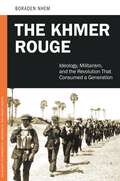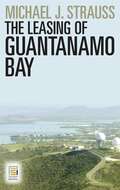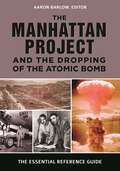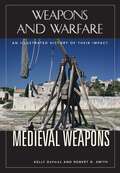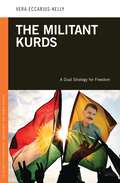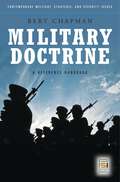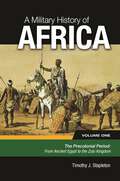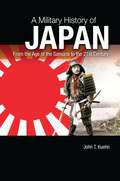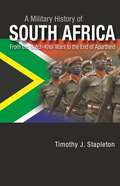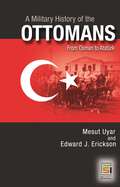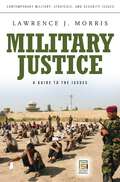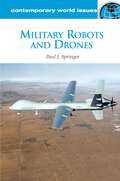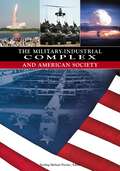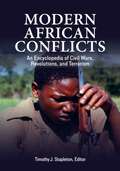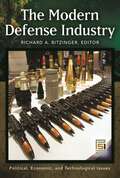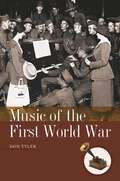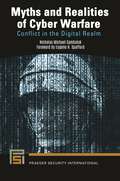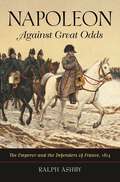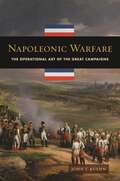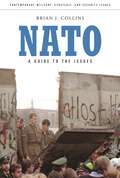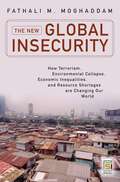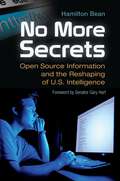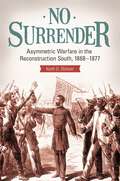- Table View
- List View
The Khmer Rouge: Ideology, Militarism, and the Revolution That Consumed a Generation (PSI Guides to Terrorists, Insurgents, and Armed Groups)
by Nhem BoradenThis book provides a comprehensive yet concise narrative of the history of the Khmer Rouge, from its inception during the 1950s through its eventual reintegration into Cambodian society in 1998.The Khmer Rouge: Ideology, Militarism, and the Revolution That Consumed a Generation examines the entire organizational life of the Khmer Rouge, looking at it from both a societal and organizational perspective. The chapters cover each pivotal period in the history of the Khmer Rouge, explaining how extreme militarism, organizational dynamics, leadership policies, and international context all conspired to establish, maintain, and destroy the Khmer Rouge as an organization. The work goes beyond inspecting the actions of a few key leadership individuals to describe the interaction among different groups of elites as well as the ideologies and culture that formed the structural foundation of the organization.
The Leasing of Guantanamo Bay (Praeger Security International)
by Michael J. StraussPost-2002 events at the U.S. naval facility at Guantanamo Bay have generated a spate of books on its use as a detention center in the U.S. fight against terrorism. Yet the crucial enabling factor-the lease that gave the U.S. control over the territory in Cuba-has till now escaped any but cursory consideration. The Leasing of Guantanamo Bay explains just how Guantanamo Bay came to be a leased territory where the U.S. has no sovereignty and Cuba has no jurisdiction. This is the first definitive account of the details and workings of the unusual and problematic state-to-state leasing arrangement that is the essential but murky foundation for all the ongoing controversies about Guantanamo Bay's role in U.S. anti-terrorism efforts, charges of U.S. human rights violations, and U.S.-Cuban relations.The Leasing of Guantanamo Bay provides an overview of territorial leasing between states and shows how it challenges, compromises, and complicates established notions of sovereignty and jurisdiction. Strauss unfolds the history of the Guantanamo Bay, recounting how the U.S. has deviated widely from the original terms of the lease yet never been legally challenged by Cuba, owing to the strong state-weak state dynamics. The lease is a hodge-podge of three U.S.-Cuba agreements full of discrepancies and uncorrected errors. Cuba's failure to cash the annual rent checks of the U.S. has legal implications not only for the future of Guantanamo Bay but of the Westphalian system of states. Compiled for the first time in one place are the verbatim texts of all the key documents relevant to the Guantanamo Bay lease-including treaties and other agreements, a previously unpublished U.N. legal assessment, and once-classified government correspondence.
The Manhattan Project and the Dropping of the Atomic Bomb: The Essential Reference Guide
by Aaron BarlowThis invaluable resource offers students a comprehensive overview of the Manhattan Project and the decision to drop the atomic bomb, with more than 80 in-depth articles on a variety of topics and dozens of key primary source documents.This book provides everything readers need to know about the Manhattan Project, the U.S. program that led to the development of the atomic bomb during World War II. It begins with a detailed introduction to the project and includes an alphabetical collection of relevant entries on such topics as the Enola Gay, the first aircraft to drop an atomic bomb; Enrico Fermi, creator of the first nuclear reactor; Hiroshima, the target of the first atomic bomb; and Robert Oppenheimer, director of the Manhattan Project.Dozens of primary sources include eyewitness accounts, government memos, letters, press releases, and other important documents relevant to the establishment and success of the Manhattan Project. A set of four essays written by prominent scholars address whether the United States was justified in dropping the atomic bomb on Japan. The book also includes a comprehensive chronology that reveals key moments related to the creation of the world's first nuclear weapon as well as a bibliography of resources that points readers toward additional information on the Manhattan Project, nuclear weapons, and World War II.
Medieval Weapons: An Illustrated History of Their Impact (Weapons and Warfare)
by Robert D. Smith Kelly DeVriesThis fascinating reference covers the weapons and armor used by warriors from the 4th to the 15th century and discusses how and why they changed over time.In the Middle Ages, the lack of standardized weapons meant that one warrior's arms were often quite different from another's, even when they were fighting on the same side. And with few major technological advances in that period, the evolution of those weapons over the centuries was incremental. But evolve they ultimately did, bringing arms, armor, and siege weapons to the threshold of the modern era. From the fall of the Roman Empire to the beginnings of the Renaissance, Medieval Weapons: An Illustrated History of Their Impact covers the inexorable transformation from warrior in the mail shirt to fully armored knight, from the days of spears and swords to the large-scale adoption of the handgun.Medieval Weapons covers this fascinating expanse of centuries in chapters devoted to the early medieval, Carolingian, Crusade, and late medieval periods. Within each period, the book details how weapons and armor were developed, what weapons were used for different types of battles, and how weapons and armor both influenced, and were influenced by, changing tactics in battles and sieges.
The Militant Kurds: A Dual Strategy for Freedom (PSI Guides to Terrorists, Insurgents, and Armed Groups)
by Vera Eccarius-KellyThis extensive examination of the Kurdish conflict in Turkey, Iraq, Germany, and the EU focuses on the history and development of the Kurdish Workers Party (PKK) and its impact on transnational security, human rights, and democratization.The Militant Kurds: A Dual Strategy for Freedom explores the complexity of the 30-year guerrilla war of the Kurdish Workers Party (PKK) against the Turkish Republic, identifying longstanding obstacles to peace and probing the new dynamics that may lead to an end to the conflict. In doing so, the book provides fascinating insights into Turkey's national ethos, its dominant military culture, and civil society's struggle for increased democratization.The Militant Kurds offers an extensive analysis of the precarious position of the Kurdish minority, beginning with the establishment of the modern Turkish republic in 1923. Divided into five sections examining current political realities in Turkey, the book investigates the role of Islam and ethnicity, analyzes the rise of the PKK, discusses Turkish military culture, and explains the international dimensions of the Kurdish conflict. Comparative historical, political, and socioeconomic examples contextualize the long struggle for Kurdish self-determination. Each chapter offers an analysis of the underlying dynamics of the conflict and provides up-to-date explanations.
Military Doctrine: A Reference Handbook (Contemporary Military, Strategic, and Security Issues)
by Bert ChapmanThis comprehensive volume provides a thorough overview of 20th- and 21st-century military doctrines worldwide.Military Doctrine: A Reference Handbook takes a thorough look at 20th- and 21st-century military doctrines around the world. It excerpts relevant English-language scholarly and governmental literature to paint a picture of how military doctrine has developed in recent history, what military doctrines are currently operating on the world stage, and where military doctrine is heading in the near future. The book casts a wide net, scanning the relevant government documents, international agreements, monographs, journals, conference papers, and Internet resources to present a thorough overview of the importance of military doctrine in today's highly unstable world. Because military institutions are important formulators of national military doctrine and not merely implementers, this book examines the roles played by military organizations around the world. With the proliferation of independent military scholars and the widespread influence of their work in the Internet age, the book also scans the "gray" literature and describes its effects on military doctrine.
A Military History of Africa [3 volumes]: [3 volumes]
by Timothy J. StapletonA detailed and thorough chronological overview of the history of warfare and military structures in Africa, covering ancient times to the present day.A Military History of Africa achieves a daunting task: it synthesizes decades of specialized academic research and literature—including the most recent material—to offer an accessible survey of Africa's military history, from the earliest times to the present day. The first volume examines the precolonial period beginning with warfare in ancient North Africa including ancient Egypt and Carthage and continues through the cavalry-based Muslim empires of the trans-Sahara trade and the wars of the slave trade in West and East Africa. The second volume focuses on the wars of European colonial conquest and African resistance during the late 19th century, African participation in both world wars, and the early violent struggles for independence from the 1950s and early 1960s. The third volume explores warfare in postcolonial Africa, including coverage of the impact of the global Cold War, conflicts in Southern Africa from the 1960s to 1980s, the development of postcolonial African armed forces, and civil wars sparked by the discovery of precious resources, such as diamonds in Sierra Leone. Readers of this three-volume work will understand how warfare and military structures have been consistently central to the development of African societies.
A Military History of Japan: From the Age of the Samurai to the 21st Century
by John T. KuehnThis comprehensive volume traces the evolution of Japanese military history—from 300 AD to present day foreign relations—and reveals how the country's cultural views of power, violence, and politics helped shape Japan's long and turbulent history of war.The legacy of Japanese warfare is steeped in honor, duty, and valor. Yet, some of the more violent episodes in this country's military history have tainted foreign attitudes toward Japan, oftentimes threatening the economic stability of the Pacific region. This book documents Japan's long and stormy history of war and military action, provides a thorough analysis of the social and political changes that have contributed to the evolution of Japan's foreign policy and security decisions, and reveals the truth behind the common myths and misconceptions of this nation's iconic war symbols and events, including samurais, warlords, and kamikaze attacks.Written by an author with military experience and insight into modern-day Japanese culture gained from living in Japan, A Military History of Japan: From the Age of the Samurai to the 21st Century examines how Japan's history of having warrior-based leaderships, imperialist governments, and dictators has shaped the country's concepts of war. It provides a complete military history of Japan—from the beginning of the Imperial institution to the post-Cold War era—in a single volume. This thoughtful resource also contains photos, maps, and a glossary of key Japanese terms to support learning.
A Military History of South Africa: From the Dutch-Khoi Wars to the End of Apartheid
by Timothy J. StapletonThis work offers the first one-volume comprehensive military history of modern South Africa.A Military History of South Africa: From the Dutch-Khoi Wars to the End of Apartheid represents the first comprehensive military history of South Africa from the beginning of European colonization in the Cape during the 1650s to the current postapartheid republic. With particular emphasis on the last 200 years, this balanced analysis stresses the historical importance of warfare and military structures in the shaping of modern South African society. Important themes include military adaptation during the process of colonial conquest and African resistance, the growth of South Africa as a regional military power from the early 20th century, and South African involvement in conflicts of the decolonization era. Organized chronologically, each chapter reviews the major conflicts, policies, and military issues of a specific period in South African history. Coverage includes the wars of colonial conquest (1830-69), the diamond wars (1869-81), the gold wars (1886-1910), World Wars I and II (1910-45), and the apartheid wars (1948-94).
A Military History of the Ottomans: From Osman to Atatürk
by Mesut Uyar Ph.D. Edward J. EricksonThe Ottoman Army had a significant effect on the history of the modern world and particularly on that of the Middle East and Europe. This study, written by a Turkish and an American scholar, is a revision and corrective to western accounts because it is based on Turkish interpretations, rather than European interpretations, of events. As the world's dominant military machine from 1300 to the mid-1700's, the Ottoman Army led the way in military institutions, organizational structures, technology, and tactics. In decline thereafter, it nevertheless remained a considerable force to be counted in the balance of power through 1918. From its nomadic origins, it underwent revolutions in military affairs as well as several transformations which enabled it to compete on favorable terms with the best of armies of the day. This study tracks the growth of the Ottoman Army as a professional institution from the perspective of the Ottomans themselves, by using previously untapped Ottoman source materials. Additionally, the impact of important commanders and the role of politics, as these affected the army, are examined. The study concludes with the Ottoman legacy and its effect on the Republic and modern Turkish Army.This is a study survey that combines an introductory view of this subject with fresh and original reference-level information. Divided into distinct periods, Uyar and Erickson open with a brief overview of the establishment of the Ottoman Empire and the military systems that shaped the early military patterns. The Ottoman army emerged forcefully in 1453 during the siege of Constantinople and became a dominant social and political force for nearly two hundred years following Mehmed's capture of the city. When the army began to show signs of decay during the mid-seventeenth century, successive Sultans actively sought to transform the institution that protected their power. The reforms and transformations that began frist in 1606successfully preserved the army until the outbreak of the Ottoman-Russian War in 1876. Though the war was brief, its impact was enormous as nationalistic and republican strains placed increasing pressure on the Sultan and his army until, finally, in 1918, those strains proved too great to overcome. By 1923, Mustafa Kemal Atatürk emerged as the leader of a unified national state ruled by a new National Parliament. As Uyar and Erickson demonstrate, the old army of the Sultan had become the army of the Republic, symbolizing the transformation of a dying empire to the new Turkish state make clear that throughout much of its existence, the Ottoman Army was an effective fighting force with professional military institutions and organizational structures.
Military Justice: A Guide to the Issues (Contemporary Military, Strategic, and Security Issues)
by Lawrence J. MorrisPublic, press, and academic interest in the military justice system has increased over the past generation. This is a result of several high-profile trials (the Sergeant Major of the Army and Kelly Flinn, among many others), a popular TV show (even if it was Navy JAGs), and broader public attention to and interest in the military, stemming from the post-Cold War prominence of the military (Gulf War I, Balkans, and post-9/11 operations). In addition, some of the more prominent cases from the war in Iraq, including Abu Ghraib and detainee cases, as well as the GTMO military commissions, have kept military justice in the news. There are many misconceptions about the rudiments of the military justice system. Many perceive severity where there is none (though there are features that differ from the civilian system, sometimes unfavorably for the accused), and few are aware of its unique protections and features. Senators Lott and McConnell were not unique in the inaccurate perceptions they publicly stated about military justice during hearings on military tribunals. This volume would accomplish two main purposes: (1) provide comprehensive, accurate, and current information about the military justice system and related disciplinary features, written in laymen's language; and (2) explain the system through some illustrative or engaging anecdotes (e.g., the trials of Billy Mitchell, William Calley, and the World War II Nazi saboteurs, whose capture and trial provide the basis for today's Guantanamo-based trials of suspected terrorists).
Military Robots and Drones: A Reference Handbook (Contemporary World Issues)
by Paul J. SpringerThis book provides an insightful introduction to the most important field of military innovation for the 21st century—robotic and drone weaponry.For centuries, warring nations have sought to lower the risk to highly vulnerable humans on the battlefield, typically by providing protective armor, making soldiers' positions more difficult to detect, or by striking from locations safe from retaliation. Autonomous weaponry has now reached the point where robotic systems can perform some key tasks that previously required direct human involvement.Military Robots and Drones: A Reference Handbook introduces the lay person to a highly specialized topic, providing the foundation necessary for further study in this field. Appropriate for high school and college-level students, as well as general readers with an interest in the topic, the author explains the many military applications of robotics as well as current limitations and disadvantages. The book also provides a general history of robotic warfare; examines key individuals, agencies, documents, and models; discusses controversies within the field of robotic and drone warfare, such as ethical considerations; and explains how increased reliance on robotics has affected the structure and strategy of the military.
The Military-Industrial Complex and American Society
by Sterling Michael PavelecThe first complete reference on the military-industrial complex, from its Cold War era expansion to the present.The Military-Industrial Complex and American Society addresses the broad subject of the political economy of defense research and its wide-reaching effects on many aspects of American life. Ranging from the massive arms buildup of the Cold War to the influx of private contractors and corporations such as Halliburton, it reveals the interconnectedness of the military, industry, and government within the history of this public/private enterprise.The Military-Industrial Complex and American Society offers over 100 alphabetically organized entries on a wide of range of significant research bodies and government agencies, as well as important people, events, and technologies. In addition, a series of essays looks at such essential topics as propaganda, think tanks, defense budgeting, the defense industry and the economy, and the breakdown of the military-industrial complex in Vietnam. With this work, students, policymakers, and other interested readers will understand the ramifications of the relationships between industry, scientific and technological communities, the government, and society.
Modern African Conflicts: An Encyclopedia of Civil Wars, Revolutions, and Terrorism
by Timothy J. StapletonAn essential resource for students or general readers interested in post-colonial Africa, this encyclopedia provides coverage of different regions, countries, wars, battles, factions, leaders, and foreign powers.Armed conflict represents a substantial part of African history since around 1960, yet this history is either insufficiently taught or overshadowed by negative stereotypes about African "tribal warfare."In an effort to introduce this vital topic to students and general readers alike, this one-volume encyclopedia provides concise historical information on conflicts that occurred in postcolonial Africa. The entries cover all the regions of Africa (North, West, Central, East, and Southern); the Cold War and post–Cold War periods; a range of important leaders; various types of conflicts from civil wars and insurgencies to conventional military engagements; involvement of foreign powers; and such themes as airpower, women and war, and genocide.
The Modern Defense Industry: Political, Economic, and Technological Issues (Praeger Security International)
by Richard A. BitzingerWhether it's guns and ammunition or multidimensional anti-terrorism systems, the defense industry is dynamic, complex, and ubiquitous. It is also mysterious, powerful, and controversial, involving thousands of players worldwide—from suppliers and producers to government and military procurers to shadowy figures that trade in the black market. This comprehensive, two-volume reference will explore, on a global scale, the various issues, concepts, problems, and controversies surrounding the rise of the modern defense industry. Unparalleled in its scope and insight, The Modern Defense Industry will prove invaluable to the industry's critics and champions alike.The phenomenon of a more-or-less permanent defense industry—especially one so wide in scale, breadth (air, sea, land, and space), technology, and geography—is still relatively new. Until now, its implications for politics, economics, and technology have not been adequately discussed in an authoritative, accessible format for scholars and researchers, business people, journalists, policymakers, and interested laymen.The Modern Defense Industry addresses the period from 1945 to the present, covering the United States, Europe, Russia, China, Israel, and other important arms-producing and arms-procuring countries. Including essays by experts from around the world, a glossary, data on firms and governments, laws and policies, primary documents, case studies, and a host of other elements, this set will be a unique resource for anyone interested in the arms industry. It will also offer penetrating insights into topics like international relations and diplomacy, arms proliferation, and contemporary politics. Volume I comprises chapters by experts in the field on topics like the relationship between the industry, military, and government; how new modes of warfare are changing the industry; the implications of globalization on the industry; the black and gray areas of the arms trade; and much more. Volume II features an extensive A-Z glossary of terms, lists of defense firms and government agencies, annotated primary documents, lists of leading defense contractors and key weapons systems, an analysis of key legislation, and professional organizations.The Modern Defense Industry sets the standard for state of the art overviews of an industry that has, for better or worse, come to infuse nearly every aspect of world affairs in the early twenty-first century.
Music of the First World War (American History through Music)
by Don TylerThis book discusses WWI-era music in a historical context, explaining music's importance at home and abroad during WWI as well as examining what music was being sung, played, and danced to during the years prior to America's involvement in the Great War.Why was music so important to soldiers abroad during World War I? What role did music—ranging from classical to theater music, rags, and early jazz—play on the American homefront? Music of the First World War explores the tremendous importance of music during the years of the Great War—when communication technologies were extremely limited and music often took the place of connecting directly with loved ones or reminiscing via recorded images.The book's chapters cover music's contribution to the war effort; the variety of war-related songs, popular hits, and top recording artists of the war years; the music of Broadway shows and other theater productions; and important composers and lyricists. The author also explores the development of the fledgling recording industry at this time.
Myths and Realities of Cyber Warfare: Conflict in the Digital Realm (Praeger Security International)
by Nicholas Michael SambalukThis illuminating book examines and refines the commonplace "wisdom" about cyber conflict—its effects, character, and implications for national and individual security in the 21st century."Cyber warfare" evokes different images to different people. This book deals with the technological aspects denoted by "cyber" and also with the information operations connected to social media's role in digital struggle.The author discusses numerous mythologies about cyber warfare, including its presumptively instantaneous speed, that it makes distance and location irrelevant, and that victims of cyber attacks deserve blame for not defending adequately against attacks. The author outlines why several widespread beliefs about cyber weapons need modification and suggests more nuanced and contextualized conclusions about how cyber domain hostility impacts conflict in the modern world.After distinguishing between the nature of warfare and the character of wars, chapters will probe the widespread assumptions about cyber weapons themselves. The second half of the book explores the role of social media and the consequences of the digital realm being a battlespace in 21st-century conflicts. The book also considers how trends in computing and cyber conflict impact security affairs as well as the practicality of people's relationships with institutions and trends, ranging from democracy to the Internet of Things.
Napoleon Against Great Odds: The Emperor and the Defenders of France, 1814
by Ralph AshbyThis revisionist history offers a fresh analysis of Napoleon and the French army as they defended their empire against the massive Coalition invasion of 1814.French defeat in 1814 is too often shrugged off as the result of obvious and understandable factors. Napoleon Against Great Odds: The Emperor and the Defenders of France, 1814 challenges the widely accepted notion that war-weariness and internal political opposition to Napoleon were the decisive and direct causes of French defeat. At least as important, it argues, were material shortages, diplomatic missteps, and even faulty strategic planning on Napoleon's part. The book not only traces the narrative of Napoleon's 1814 Campaign in France, but explores the formation of the French army tasked with defending France against the Coalition invasion. Diplomatic, political, and social factors are taken into account and the issue of war-weariness is analyzed carefully and critically. Each branch and arm of the French forces is examined, as are military mobilization under difficult circumstances and partisan and guerilla warfare. Designed to encourage fresh debate about the 1814 campaign, the book offers thought-provoking reading for scholars and general readers alike.
Napoleonic Warfare: The Operational Art of the Great Campaigns
by John T. KuehnThis carefully researched book provides an operational level analysis of European warfare from 1792 to 1815 that includes the tactics, operations, and strategy of major conflicts of the time.2015 marks the 200th anniversary of the famous Waterloo campaign, sparking a renewed interest in Napoleon's prowess as a military leader and acumen as a strategist. This in-depth analysis scrutinizes the complex campaigns and strategies of the French Revolutionary and Napoleonic Wars, looking at how military genius—referred to in the book as "operational art"—shaded the panorama of 18th-century warfare.Drawing upon familiar battles as well as lesser-known campaigns, this sweeping reference uses 20th-century military theory to explain 19th-century events. Author John T. Kuehn discusses joint warfare and strategy found in the military movements of Marshal Suvorov in Italy and Switzerland in 1799; the early and later campaigns of Napoleon and Nelson; and the Duke of Wellington's campaigns in Spain, Portugal, and Belgium. The work also includes an entire chapter on theory and history of operational art spanning a variety of perspectives—from theorist Carl von Clausewitz to American air force pilot John Boyd. This book is a must-have for any military history collection.
NATO: A Guide to the Issues (Contemporary Military, Strategic, and Security Issues)
by Brian J. CollinsThis superb introduction to NATO is written for the national security novice, yet is full of insights for the more seasoned hand interested in how and why NATO reached its current state.In the more than half-century since NATO was founded, there has been endless debate about its purpose, about whether it is meeting that purpose, and about the strategies it employs to that end. Speculation has also been rife about the organization's "imminent demise." Those questions and more are the subject of NATO: A Guide to the Issues.Covering the organization from its founding in 1949 through the present, the guide examines aspects of NATO that have undergone tremendous change over the years, including its purpose, military mission, geographic concept of operations, and membership. At the same time, it explores key aspects of NATO's organization that have remained constant. These include the ability of members to participate in operations as much or as little as they desire, decision-making by consensus, and a general belief that people from different countries working together on a daily basis promotes cooperation, understanding, and friendship.
The Nazi Spy Pastor: Carl Krepper and the War in America
by J. Francis WatsonOne man could have enabled the most audacious terrorist threat against America prior to 9/11 and helped the Nazis win World War II—the Nazi spy pastor, Carl Krepper. His riveting story brings to light a forgotten chapter in the history of the Second World War.As America continues to wrestle with issues surrounding the threat of sabotage and terrorism, this eye-opening work details a very real threat faced by our country in the Second World War, and the key aspects of the underground war that was fought in this country by Nazi agents. The Nazi Spy Pastor: Carl Krepper and the War in America presents the fascinating true story of a secret plot to be executed on American soil—a German sabotage operation with intended targets in New York, New Jersey, Pennsylvania, Tennessee, and Illinois. This book chronicles, for the first time, the remarkable life of Carl Krepper—naturalized American citizen, Lutheran pastor, and the Nazi deep-cover operative who could have made possible the greatest terrorist threat on American soil prior to the attacks on September 11th. Historian J. Francis Watson draws on newly declassified archival and documentary materials to tell the full story of how a devoted clergyman lost his way and betrayed his calling, instead advocating an ideology that supported genocide and the deaths of innocent victims in America, and how he came to play a key role in the Pastorius sabotage plot. The book covers fascinating cloak-and-dagger details of submarine infiltrations, safe houses, and secret codes, detailing Krepper's life, his work as a Nazi agent, and the FBI sting operation that finally brought about his arrest in December of 1944. This little-known, real-life espionage story will serve students of World War II history and appeal to readers interested in immigration and the integration of immigrant populations as well as the histories of New York and New Jersey.
The New Global Insecurity: How Terrorism, Environmental Collapse, Economic Inequalities, and Resource Shortages Are Changing Our World (Praeger Security International)
by Fathali M. MoghaddamA noted conflict expert shows how accelerating globalization is causing dangerous global insecurity that must be met by new security models and policies.The New Global Insecurity: How Terrorism, Environmental Collapse, Economic Inequalities, and Resource Shortages Are Changing Our World explores insecurity arising out of accelerating globalization. In this unique and forward-thinking work, psychologist Fathali M. Moghaddam, director of the Conflict Studies Program at Georgetown University, explains how and why worldwide insecurity is rising and what steps we must take to quell or reverse that insecurity to make the future of the world more peaceful.The book first analyzes the elements and roots of global insecurity, discussing it in relation to terrorism, torture, economic instability, threatened identity, and religious fundamentalism. It then puts forward a new model for understanding security, wherein "soft security capital" serves as the enabling condition for "hard security capital." Finally, the current policies for managing diversity, "multiculturalism" and "assimilation" are both rejected in favor of an exciting new policy—"omniculturalism". Drawing on his years of study and expertise, Moghaddam likewise proposes a new policy for better managing intergroup relations in an insecure age.
No More Secrets: Open Source Information and the Reshaping of U.S. Intelligence (Praeger Security International)
by Hamilton BeanThis in-depth analysis shows how the high stakes contest surrounding open source information is forcing significant reform within the U.S. intelligence community, the homeland security sector, and among citizen activists.Since 9/11, U.S. intelligence organizations have grappled with the use of "open source" information derived from unclassified material, including international newspapers, television, radio, and websites. They have struggled as well with the idea of sharing information with international and domestic law enforcement partners. The apparent conflict between this openness and the secrecy inherent in intelligence provides an opportunity to reconsider what intelligence is, how it is used, and how citizens and their government interact in the interests of national security. That is the goal of No More Secrets: Open Source Information and the Reshaping of U.S. Intelligence.To write this thought-provoking book, the author drew on his own direct participation in the institutionalization of open source within the U.S. government from 2001 to 2005, seeking to explain how these developments influence the nature of intelligence and relate to the deliberative principles of a democratic society. By analyzing how open source policies and practices are developed, maintained, and transformed, this study enhances public understanding of both intelligence and national security affairs.
No Surrender: Asymmetric Warfare in the Reconstruction South, 1868–1877
by Keith D. DicksonA modern and current examination of Reconstruction that explains how the South in the aftermath of defeat in a total war, was still able to exhaust the will of the powerful North using asymmetric warfare.The end of the Civil War may have marked the end of the official fighting, but the Congressional strategy to remake the South during Reconstruction led to a new period of warfare—asymmetric warfare in which the defeated Confederacy became the Southern resistance. Despite all the power at its disposal, the North failed to change the South after nearly 11 years of effort and instead accepted a political-social equilibrium dictated by the South. This book presents Reconstruction through an unconventional lens to explain the process of transition from war to warfare, and finally to equilibrium represented by the emergence of the New South. Author Keith D. Dickson explains how Reconstruction created a false equilibrium in the immediate aftermath of the Civil War and was reversed by Congressional action that imposed a new social and political order. By resistance of these actions through asymmetric warfare, the white South was able to establish a new equilibrium—one dictated by the South that opened the path to the New South. Providing insights from an author who is both a respected academic military historian as well as a former practitioner of unconventional warfare as a Special Forces officer, the book covers the historical period 1865–1877, casting the Reconstruction period as an example of protracted asymmetric warfare. This asymmetric warfare was conducted in phases against the Republican state governments. As both the U.S. Congress and the Grant administration abandoned the lofty goals for Reconstruction, a bitterly contested presidential election provided the opportunity to establish conditions favorable to the white South that would in turn lead to a political-social equilibrium that allowed reconciliation to begin.
Operational Psychology: A New Field to Support National Security and Public Safety
Details the growth, roles, and applications of this new specialty aiming to protect American national and public well-being in the face of increasing and novel threats both inside and outside the United States.In this age of asymmetric warfare, increasing home-grown terrorism, and continuing threats from abroad, a new specialty has emerged and expanded—operational psychology. Operational psychology plays a unique role in supporting issues of national security, national defense, and public safety. In this book, authors Mark A. Staal and Sally C. Harvey, both operational psychologists and retired military colonels, lead a team of experts explaining the field, its many roles, and how it is expanding. Topics include its application in intelligence, counterintelligence, and counterterrorism activities, consultation in high-risk training, criminal investigations including those of internet crimes against children, threat assessment, interrogations, aviation, personnel selection, and leadership development. The text addresses the ethical questions and controversies that surround some of these roles, such as those associated with interrogation techniques. It also describes the role of operational psychologists in activities ranging from assessing and training people for maximum resiliency and hardiness to profiling people and groups of concern in national security investigations.
